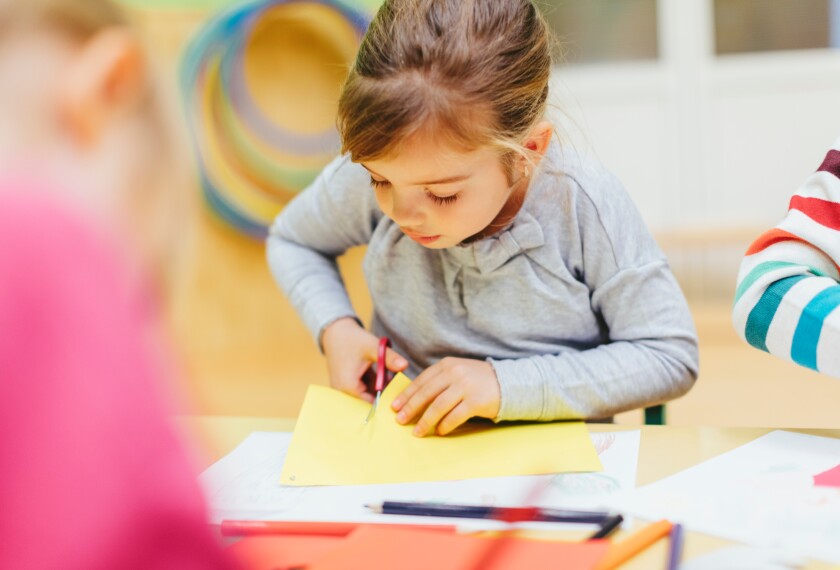Senate Democrats are planning a vote on a version of President Joe Biden’s $1.75 trillion “Build Back Better” bill sometime in the coming weeks or months. The Democratic House has already passed its version of the bill, which includes over for a massive new federal child-care program (there are additional funds for Pre-K, but I’ll set those aside for now). Yet there’s no assurance this plan will ultimately pass: Last week, West Virginia’s Joe Manchin (the crucial 50th vote for Democrats) that he has very mixed feelings about the bill, while NPR that just 41 percent of voters support the Build Back Better agenda.
Even as things remain very much up in the air, educators and advocates may be inclined to embrace this landmark expansion in child-care funding—but they’d do well to first peruse the fine print. As currently written, the program could have devastating consequences for the current child-care landscape.
For starters, the new program would likely change which child-care centers are eligible for federal support. While faith-based child-care providers are currently eligible to receive government funding, the House version of Build Back Better includes rules that would cut faith-based providers out of the picture. And that’s a big deal, given that, of the families who use center-based child care, use one affiliated with a faith-based provider.
Uncle Sam has long funded child care through the $10 billion Child Care Development Block Grant. The CCDBG enjoys broad because it provides parents with child-care certificates, supporting individual families rather than particular child-care systems. This allows it to sidestep partisan debates about which kinds of child care parents should prefer. As my colleague Max Eden recently in Newsweek, “These certificates don’t count as formal federal grants, which would subject child care centers to a slew of regulations. They effectively put cash in parents’ pockets, providing the financial basis for a robust and diverse array of trusted child care providers.”
In Build Back Better, though, the hundreds of billions in new child-care funding are officially defined as federal aid. This means that even tiny neighborhood providers and those that operate in accord with a faith tradition would be subjected to a raft of new rules and complex reporting requirements—including costly renovations required to comply with the Americans with Disabilities Act, which many of these providers would be unable to afford. For those who say “good riddance” to potentially tens of thousands of small community providers because they can’t afford the requisite renovations, understand that the result would be a rapid concentration of child care in a few larger, more impersonal, and less localized centers. If that appeals, so be it. But many find such a shift disconcerting.
Moreover, while nonsectarian providers could use Build Back Better’s funds for required facilities renovations, religiously affiliated centers would likely not be able to. That’s because the House proposal takes a direct swipe at child-care facilities housed in churches, synagogues, and mosques—potentially in violation of Supreme Court doctrine as in Trinity Lutheran v. Comer. The House language stipulates that funds reserved for facilities grants (for remodeling, renovation, or repair) may not be used for “buildings or facilities that are primarily used for sectarian instruction or religious worship.”
Existing federal programs illustrate some of the spending and staffing requirements that religious child-care providers may soon face. For example, if Head Start is any indicator, religious providers may be prohibited from asking that their employees all share their faith, while Department of Health and Human Services regulations prohibit recipients of federal funds from engaging in religious activities.
In short, given that secular child-care providers would be eligible for federal aid while church-based providers would be forced out due to a slew of program requirements, the bill threatens to decimate the more trusted, local, and faith-based parts of the child-care ecosystem. What we risk winding up with, especially for families who can’t afford costly options, is a dramatically increased reliance on less personal, less local child-care options—largely because such operators (public or private) would have the resources to jump through the requisite hoops.
There is certainly some about how all the relevant rules and regulations would be enforced in practice. But given the ambiguity in the current bill language, and the degree to which so many families currently rely upon imperiled faith-based providers, those who aim to help families struggling with child-care challenges should use the Senate bill to ensure that new federal spending doesn’t unintentionally aggravate the problem it’s intended to ameliorate.






